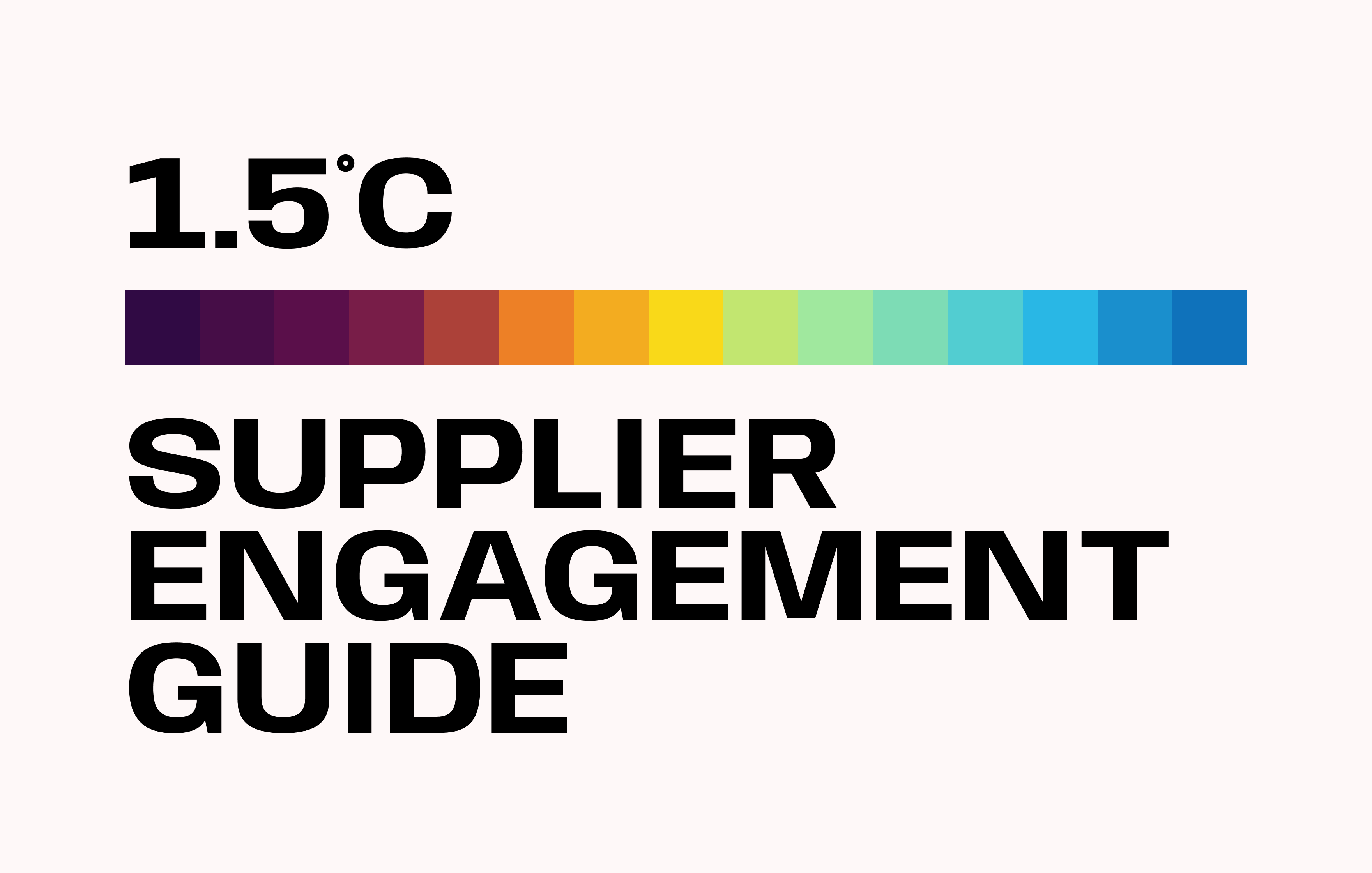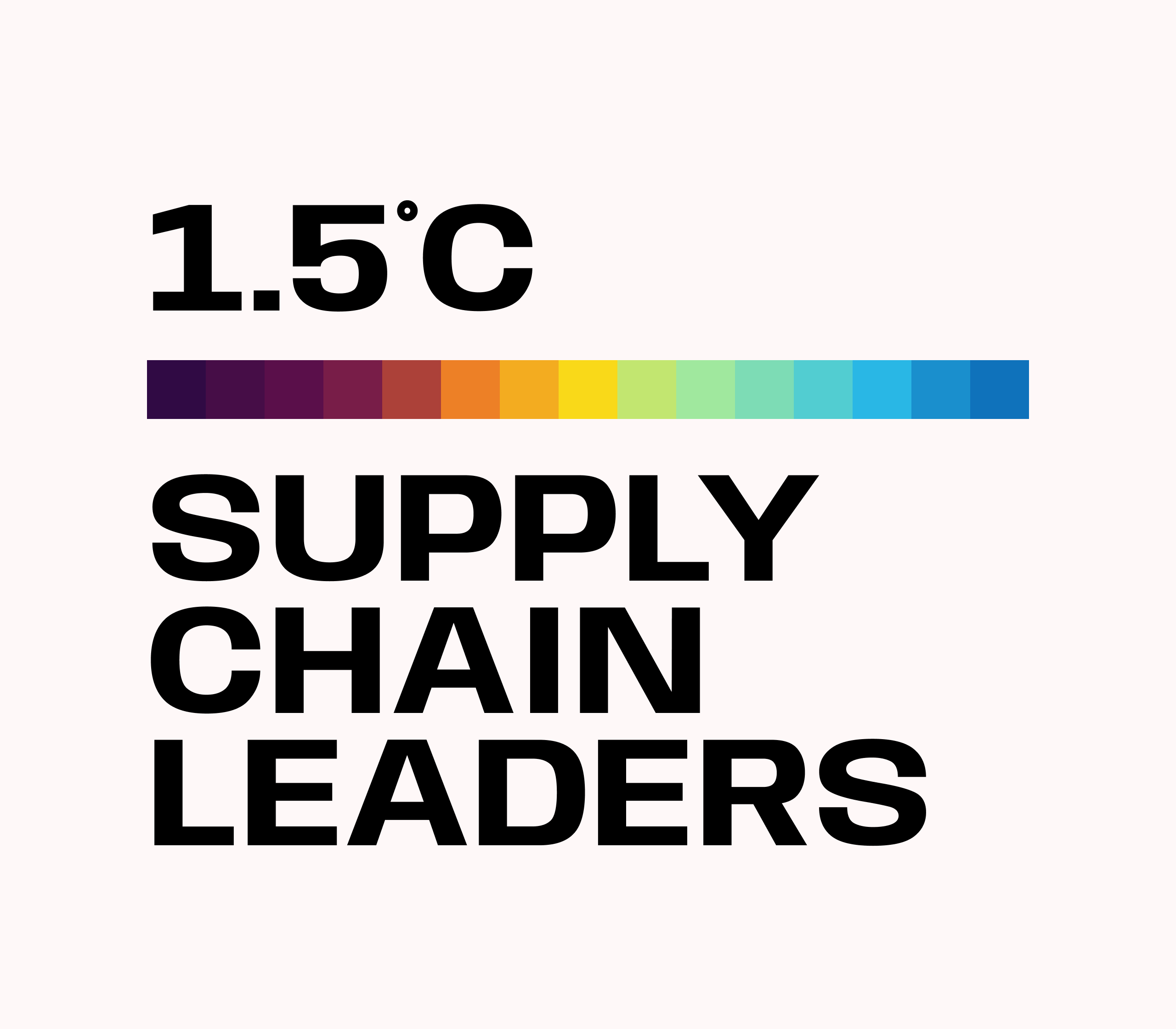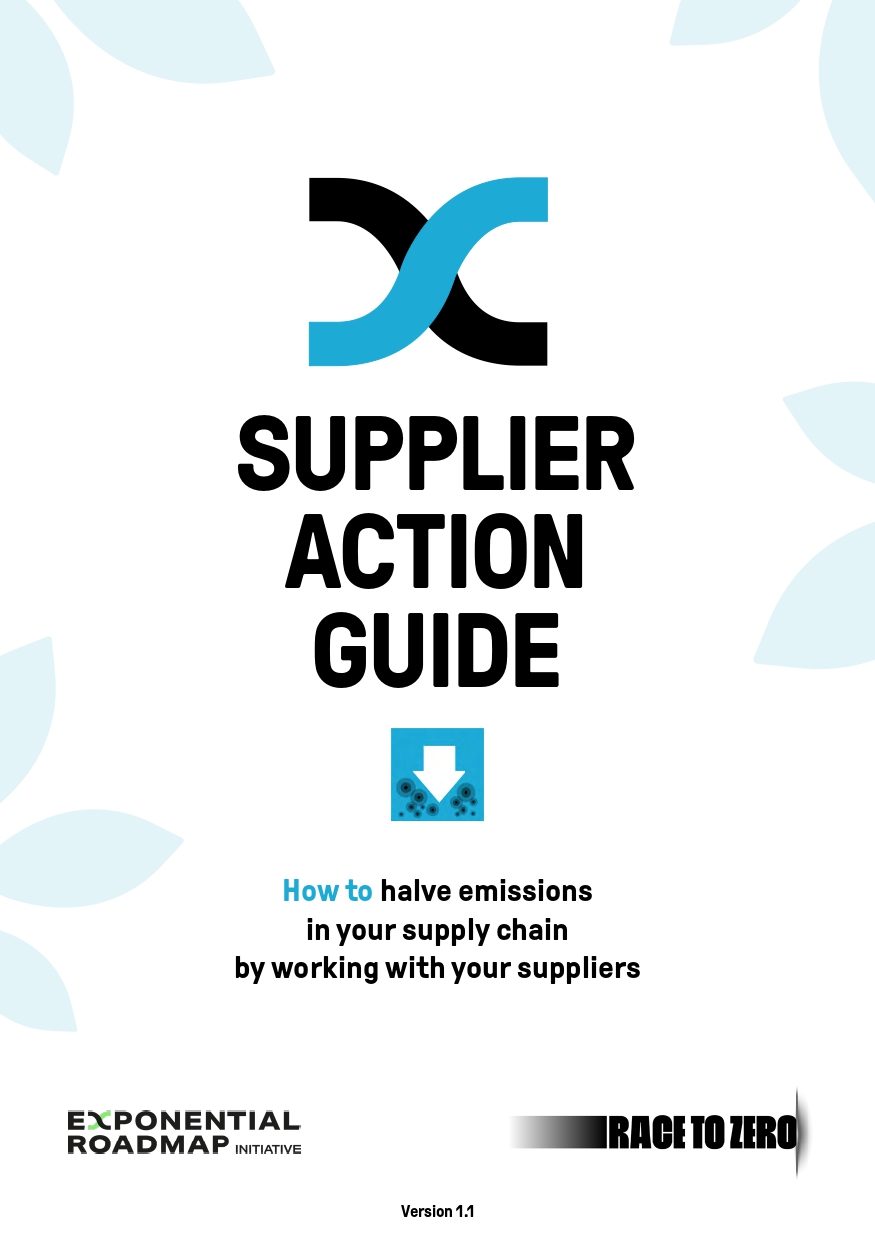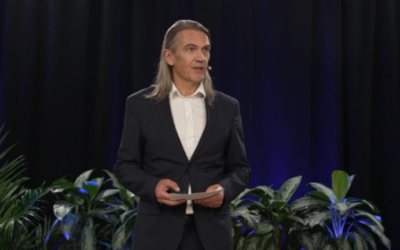
About the Supplier Engagement Guide
This interactive guide created by BSR, the Exponential Roadmap Initiative and the 1.5°C Supply Chain Leaders, provides practical guidance that any company can utilize to work with suppliers to set and implement a 1.5°C aligned target and move to action. This is also an approach that suppliers can cascade across their supply chain.
The 1.5°C Supplier Engagement Guide suggests a structure to harmonize buyers’ requirements and simplify supplier engagement on climate. It provides leading examples derived from the experiences of the 1.5°C Supply Chain Leaders, as well as other leading practices and frameworks for supplier engagement, and is aligned with the 1.5°C Business Playbook.

The Supply Chain Leaders
The 1.5°C Supply Chain Leaders work together to drive climate action throughout global supply chains, and support small and medium-sized enterprises (SMEs) through the SME Climate Hub, understanding the need to work with and support suppliers to halve emissions before 2030 and achieve net zero emissions before 2050.
The Supplier Action Guide
The Supplier Action Guide provides a practical framework that any company can use to work with suppliers to set and meet 1.5°C aligned targets, in hard copy format.
The Supplier Action Guide is aligned with science and the 1.5°C Business Playbook, linking to pillar 2 of the four-pillar-climate strategy it presents, on reducing your value chain emissions.
Latest News
New York Climate week 2024: Scaling up carbon removals from today towards net zero
Exponential roadmap Initiative and Rethinking Removals present their joint work on carbon removals to achieve net zero.
Climate Week NYC: Practical examples to reinvent your value chain
Exponential Roadmap Initiative and member companies highlight the importance of a value chain approach in driving the green transition.
Climate Week NYC: Exponential Race to the Top
Exponential Roadmap Initiative and member companies highlight the importance of a value chain approach in driving the green transition.
Handelsbanken: First bank to join the Exponential Roadmap Initiative
The Swedish bank Handelsbanken is the first to join the Exponential Roadmap Initiative, aiming to halve global emissions by 2030 through innovative climate solutions. As part of its commitment to achieving net-zero emissions by 2040, the bank will use the initiative’s Climate Solutions Framework to scale up investments in climate-positive projects.
Offering climate solutions products: Oatly joins the Exponential Roadmap Initiative
Alternative milk company Oatly has joined the Exponential Roadmap Initiative (ERI) as the first company whose products qualify as climate solutions under the Climate Solutions Framework developed by ERI and Oxford Net Zero.
New tool enables professional services providers to assess client and project portfolios against climate criteria, align with climate ambition
A new robust yet simple matrix developed by Exponential Roadmap Initiative, with key contributors AFRY and Futerra, enables professional services providers to assess how their clients and projects align with climate ambition.










